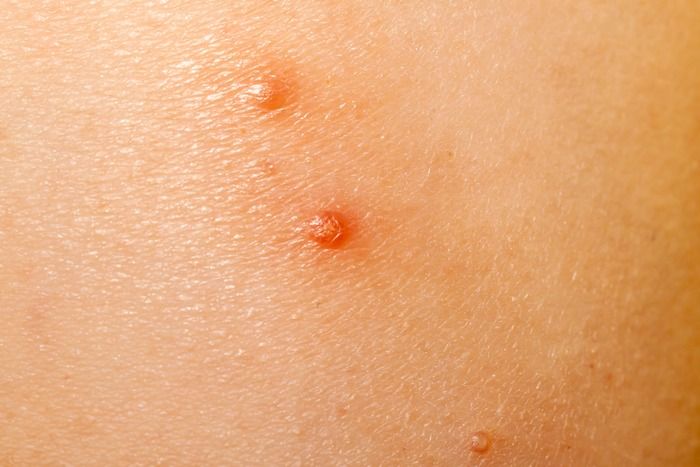- Case-Based Roundtable
- General Dermatology
- Eczema
- Chronic Hand Eczema
- Alopecia
- Aesthetics
- Vitiligo
- COVID-19
- Actinic Keratosis
- Precision Medicine and Biologics
- Rare Disease
- Wound Care
- Rosacea
- Psoriasis
- Psoriatic Arthritis
- Atopic Dermatitis
- Melasma
- NP and PA
- Skin Cancer
- Hidradenitis Suppurativa
- Drug Watch
- Pigmentary Disorders
- Acne
- Pediatric Dermatology
- Practice Management
- Prurigo Nodularis
- Buy-and-Bill
Article
Molluscum Contagiosum With Elizabeth (Lisa) Swanson, MD: Tackling a Nuisance
Author(s):
Treatment is not mandatory and, in fact, clinicians are still without an FDA-approved treatment option, but parents often insist on some sort of action.
Editor's Note: This article was updated to reflect the status of VP-102 with the FDA. The company is targeting a PDUFA goal date in the second half of 2023.
Molluscum contagiosum, the viral skin infection that causes raised, round, skin-colored bumps and is very common in children, can be quite a nuisance, according to Elizabeth (Lisa) Swanson, MD, from Ada West Dermatology and St Luke’s Children’s in Idaho, moreso for the parents than for the kids.
Treatment is not mandatory and, in fact, clinicians are still without an FDA-approved treatment option, but parents often insist on some sort of action. So what options are there? Swanson delivered a lecture at Winter Clinical Miami, held February 17-20, 2023, in Miami, Florida, on molluscum, including an overview of available treatment options and some newer therapies on the horizon.
The parent dialogue is often the most challenging part of seeing a patient with molluscum. Swanson advises clinicians to first educate and explain that molluscum will go away on its own, although it can take up to 2-3 years. Molluscum on the face or genital area is no more dangerous and will not typically lead to any scarring. Swanson also advises making sure parents are aware that the “angrier” molluscum look on presentation, the better, as it indicates the body is mounting an immune response.
There are a number of natural remedies clinicians can employ, including Zymaderm or Naturasil, although it is difficult to truly know the ingredients. Imiquimod 5% cream is a bit of a controversial choice for molluscum, as studies have shown little benefit. However, it is painless and inexpensive. Swanson recommends applying the cream to a few molluscum spot 3 times a week at bedtime for 8 weeks. Patients should expect a bit of irritation.
Another treatment option that has shown to be helpful are Candida antigen injections. The upside, Swanson said, is you only have to treat 1 lesion.
“The way I use it is 0.3 milliliters injected into 1 molluscum, and I do it every 3 to 4 weeks. I tell patients and their families to expect a total of 3 to 5 treatments,” she said. “The side effects I warn people about, I say, ‘Some kids will get a little bit of redness and swelling around the 1 that we treat. It kind of looks like a big bug bite; it doesn't tend to hurt. It usually goes away in 2 to 3 days, but it just looks funny, and that's a positive sign of immune system response.’”
(Adobe Stock/Lukassek)

Another common treatment option for molluscum is cantharidin (Beetlejuice), which can be applied with the blunt end of a Q-tip and washed off in 4 hours. Clinicians should alert parents to expect blistering, Swanson says.
Curettage is also an option for molluscum, however, tolerability is often a limiting factor. Swanson also mentioned liquid nitrogen, cimetidine, and topical retinoids.
Finally, up-and-coming treatments include VP-102, which is up for FDA approval as the manufacturer, Verrica Pharmaceuticals, works through factory issues with the agency. VP-102 is a drug-device combo that dispenses 0.7% cantharidin and is applied every 21 days for up to 4 treatments.
Berdazimer gel 10.3% (SB206) is another potential treatment on the horizon. This nitric oxide-releasing gel is applied once daily , with 1/3 patients achieving complete clearance at week 12, according to the phase 3 B-SIMPLE4 trial (NCT04535531). Novan, Inc. recently submitted a New Drug Application to the FDA for berdazimer gel 10.3% for the treatment of patients with molluscum contagiosum, with a decision expected in early 2024.
Lastly, Swanson encouraged clinicians to keep pseudofurunculoid molluscum and molluscum dermatitis in mind. Pseudofurunculoid molluscum presents as boils or pimples but are not actually infected and are a sign of the “beginning of the end.”
“Whenever I give lectures to primary care doctors and [emergency room] doctors, I say, ‘Please do not incise and drain these. This is a good sign of immune system response,’” she said.
It is important to treat molluscum dermatitis, as the itching can lead to scratching, which can further spread the molluscum.
“There's an old-school myth that if you put topical steroids near molluscum, it makes the molluscum worse. That's not true,” Swanson said. “If you don't treat the molluscum dermatitis, that makes the molluscum worse, so very important to treat.”
Reference:
Swanson E. Management of molluscum contagiosum. Presented at Winter Clinical Miami 2023; February 17-20, 2023; Miami, FL.





